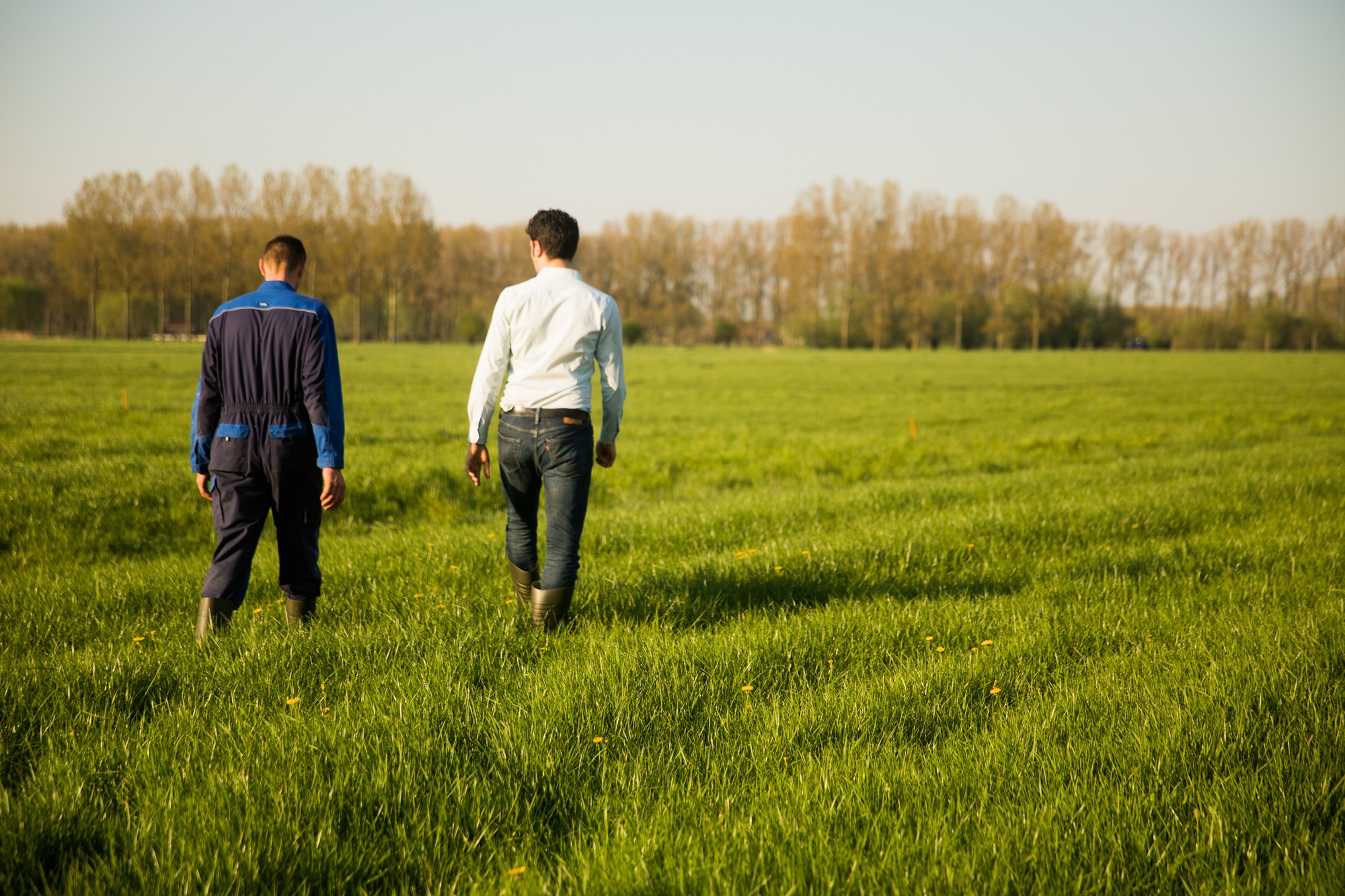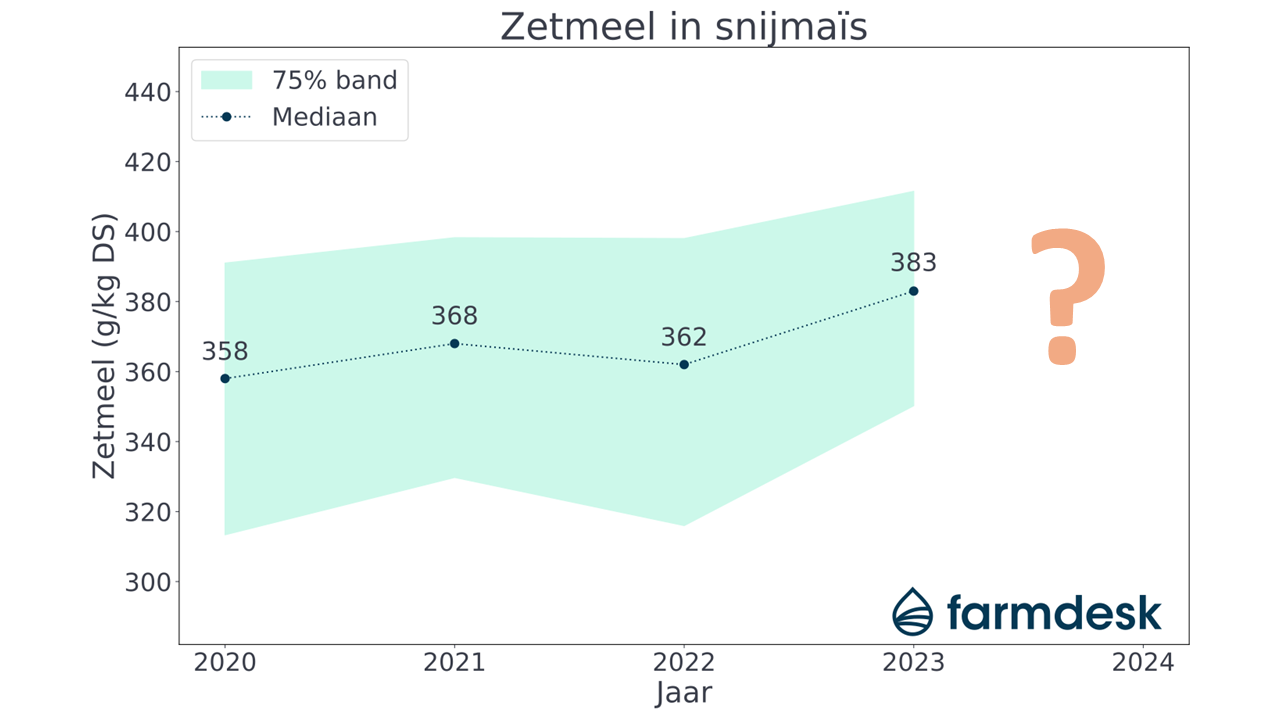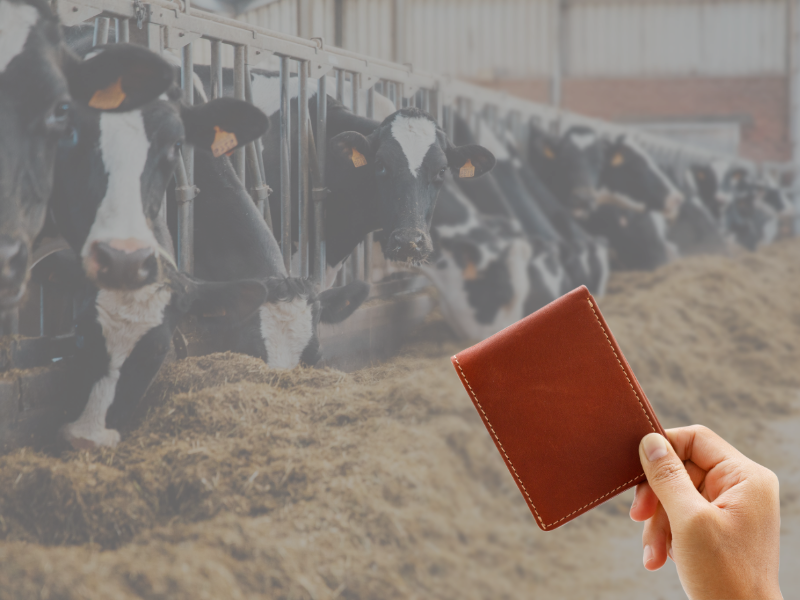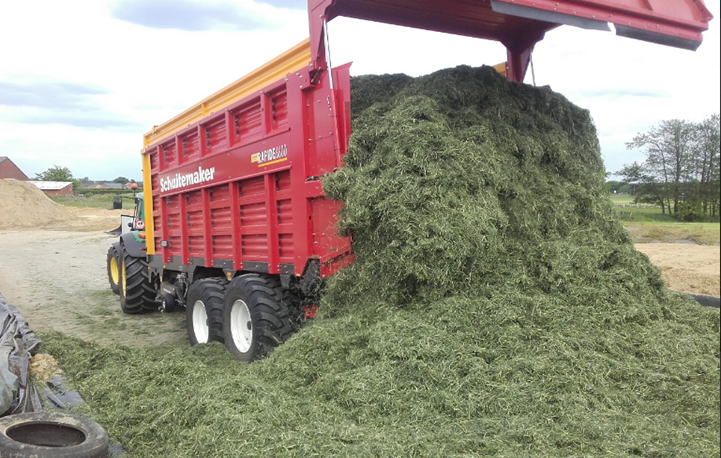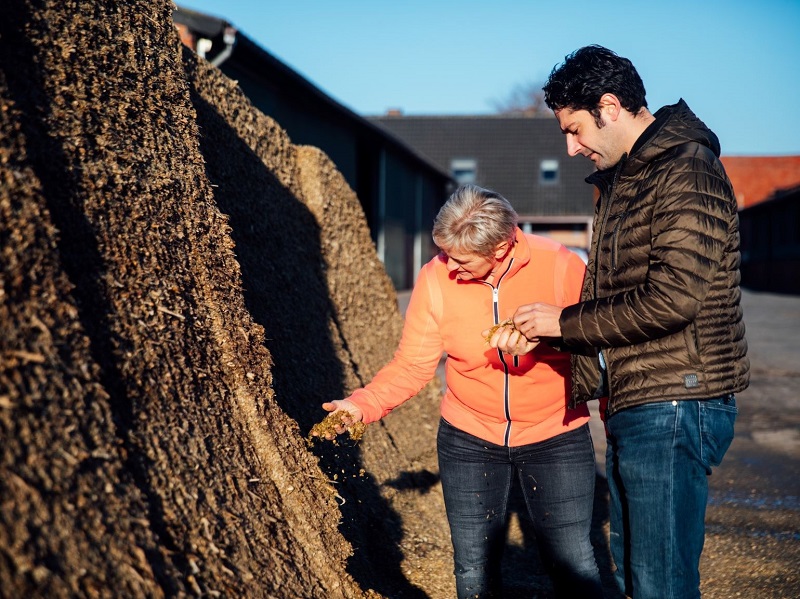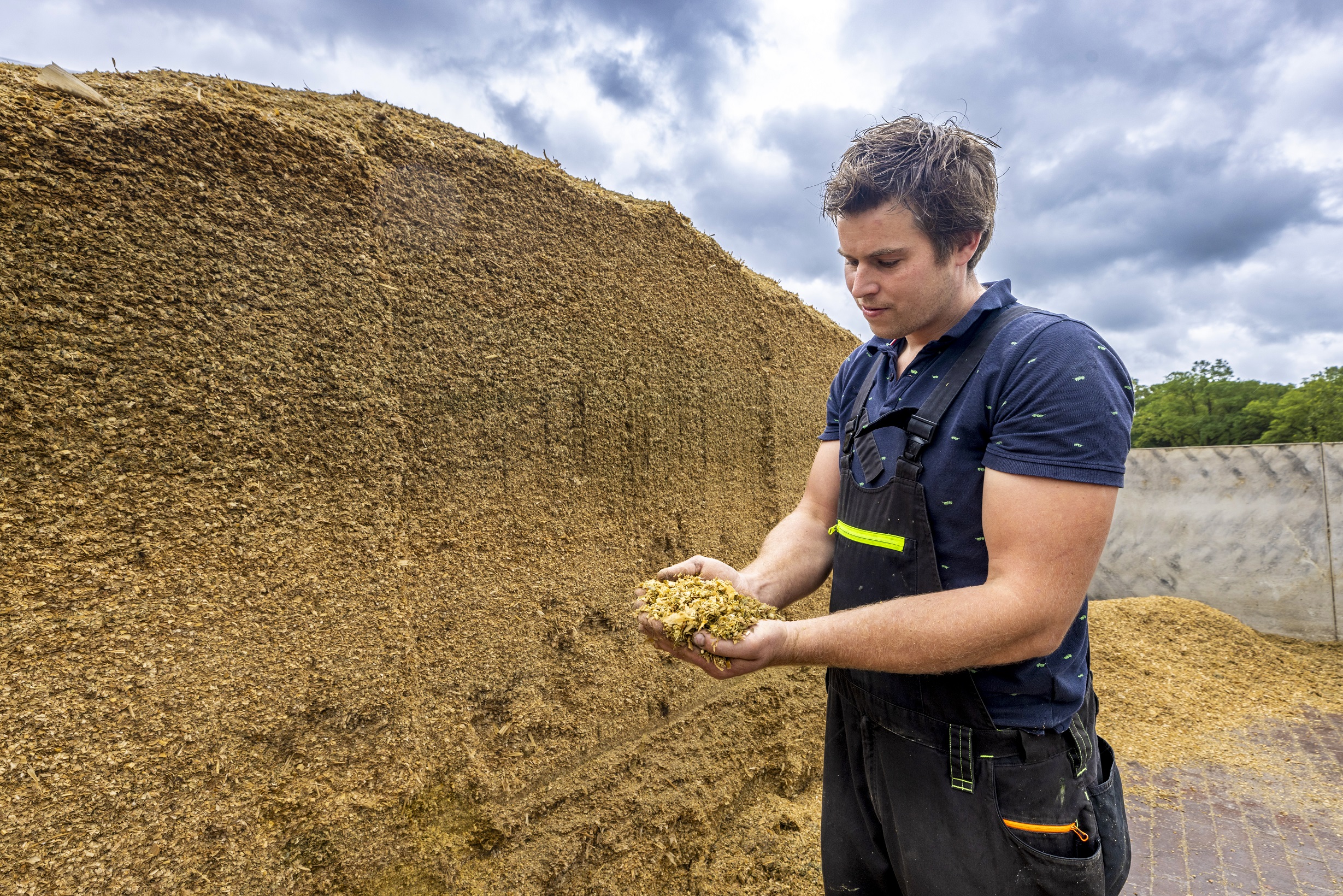The basis of a dairy cattle ration in much of the Benelux consists mainly of cut corn and to a lesser extent grass as roughage. Furthermore, pulp is often fed supplemented with an ample fraction of high-quality protein to correct the energy-rich roughage ration.
The value of cut corn
The cut corn from the basic ration, on the one hand, is energiedens with a high digestion coefficient from the starch in the cob. On the other hand, the plant is rich in crude fiber, which naturally makes digestion more difficult.
In the past, to increase feed efficiency, better stem digestibility was often sought via plant breeding, for which there is something to be said in the logic of previous ones.
The stem, however, with its 6% RE, is also very low in protein. Making this protein-poor stalk more digestible mainly produces more acetic acid that can give rise to fat support. The protein-poor nature of the stalk always requires correction with protein to achieve proper digestion and associated production. Let this correction protein just now be very expensive.
The grain is often more protein-rich and this can go smoothly above 8% RE.
"If we can combine this grain with more protein-rich stalks, we get a relatively more protein-rich base ration which needs less protein correction to achieve good milk production."
wim Govaerts
The protein-rich stalk can come from well-fertilized grass, but the crop legumes such as clover and alfalfa are increasingly making inroads into dairy farming in the Benelux countries given the sharp rise in fertilizer prices (read our previous article on this).
A sample farm from Farmdesk
Here we show a Farmdesk demo farm with 88 cows in milk, which has already put these reflections into practice. By the way, they are achieving very good technical and economic results with this farm strategy.
The pulp was replaced with "feed" beets with high dry matter content and high sugar. They dropped their cut corn in exchange for extra ccm supplemented by even more protein-rich grass (clover) silage in their base ration. Extra brewers grains fit well with the sugar-rich beet fraction.
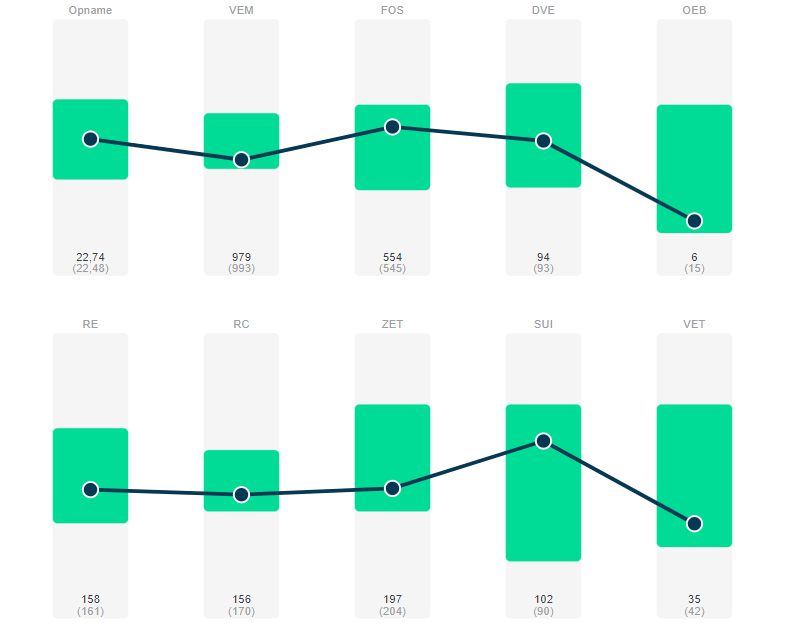
Thus, they arrive at a ration that requires only limited protein correction. With only 1.71 kg of protein correction from 1/3 soybean meal, 1/3 turnip meal and 1/3 resistant soy, the company arrives at a basic ration of 28 kg of milk per cow. This is supplemented by up to 4 kg of starter chunks in the feed dispenser.
The average production results are currently: 32.53 kg with 4.33% fat, 3.54% protein and 20 urea. This includes an average starter broth provision of 3.3 kg with an average of 170 lactation days of cows.
In short, a great technical result.
The technical and economic figures of this company
Below is an image showing this company's key Farmdesk performance indicators (read our article with more explanation ).
With these milk results comes tight feed efficiency (top left figure, 3-month average value 1.59), which also translates to very tight protein efficiency (33%).
Given good forage quality, this gives rise to high forage milk production of 24.79 kg/cow/day up there (note: Farmdesk counts beets and ccm also in forage milk) and also low concentrate use.
For the key figures feed efficiency, protein efficiency and raw milk, the higher they are, the higher the probability of high feed profits (shown in the upward-sloping clouds).
All this results in a low feed cost of only 12.16 €/100 kg of measured milk (where the average is currently 15.18 €/100 kg of measured milk). The corresponding feed profit per cow (at the same milk price) is 9.14 €/cow/day (where the average is currently 7.56 €/cow/day).
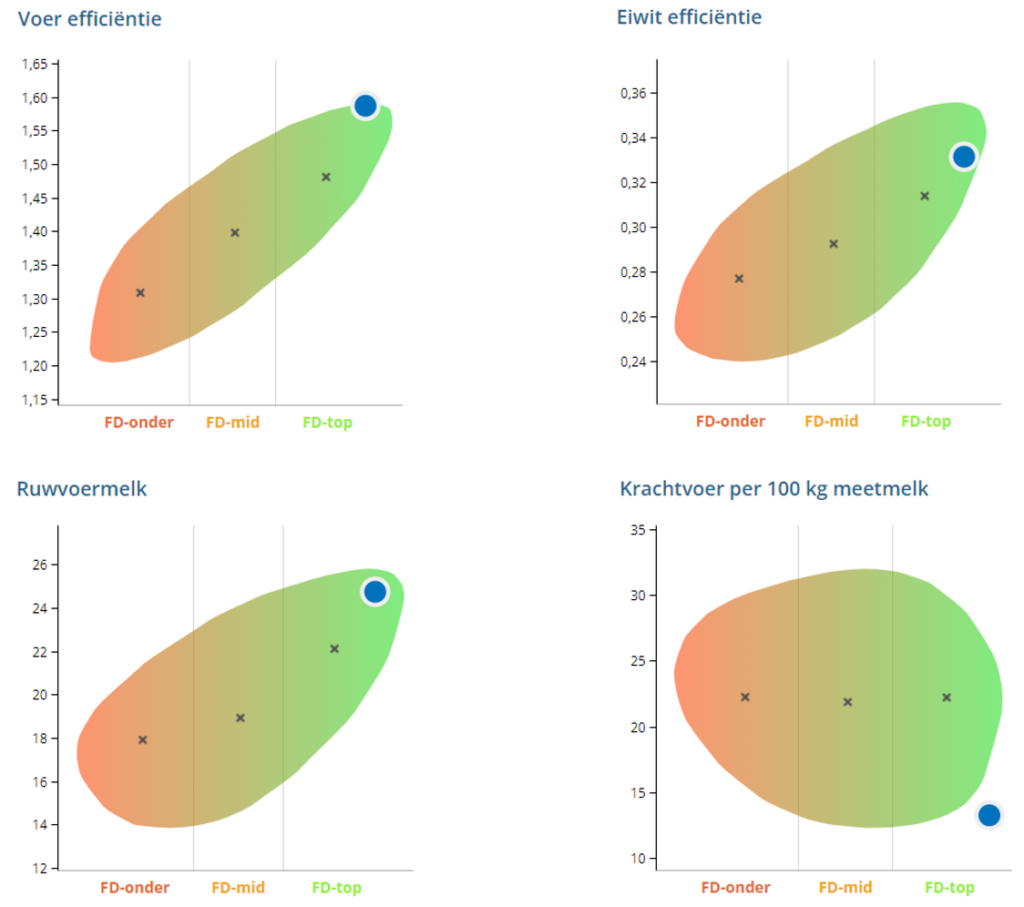
Combining relatively protein-rich stalks of grass and clover with beets and ccm/mks, produces strong farm performance with good on-farm income generation. This while reducing the cut corn fraction while maintaining starch.
"With today's expensive protein prices, less corn stalk in the ration may still be better than rapidly digestible corn stalk in the ration for which you always need protein correction in digestion, as evidenced by the farm evolution on the Farmdesk demo farm shown."
wim Govaerts
Back to the 1970s for a moment
This reminds me of our cows in the late 1970s when inflation was rampant and concentrate feed commodity prices also peaked.
At that time, the corn fields still had to be "rounded" because the harvesters could not drive on the outside and to the corner for harvesting. We fed these corn plants directly and whole to the cows on the pasture.
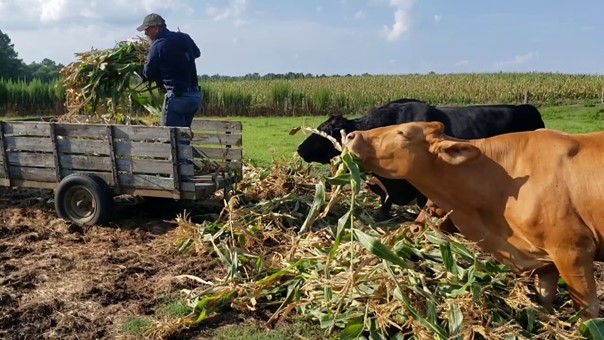
Wonderful sight how the then forty red and white milk cows like madmen grabbed the cobs of the corn plants with their mouths, shook their heads at random to loosen these cobs from the plant and then ate them tasting...
When these cobs ran out, they ate the leaves somewhat less enthusiastically. The lint was bitten off and often remained, along with stems, especially the stem part under cob ....
Much to my regret, I later had to remove them from the pasture again because otherwise they threatened to gain weight in the next year's first cut.
I feel that cows in the economically turbulent 1970s already gave us a picture of how to feed high-yielding dairy cows nearly 50 years later in a period of expensive protein-rich concentrates.
Nice that high-tech farm succession with Farmdesk shows the insights that cows have had for many years in their collected key figures.
"Perhaps this is also a plea for more MKS combined with more protein-rich stalks from grasses and forage legumes. Or possibly the bermuda corn harvesting method will soon break through completely, where we harvest only the cob, along with the leaves above the cob, as silage corn?"
wim Govaerts


